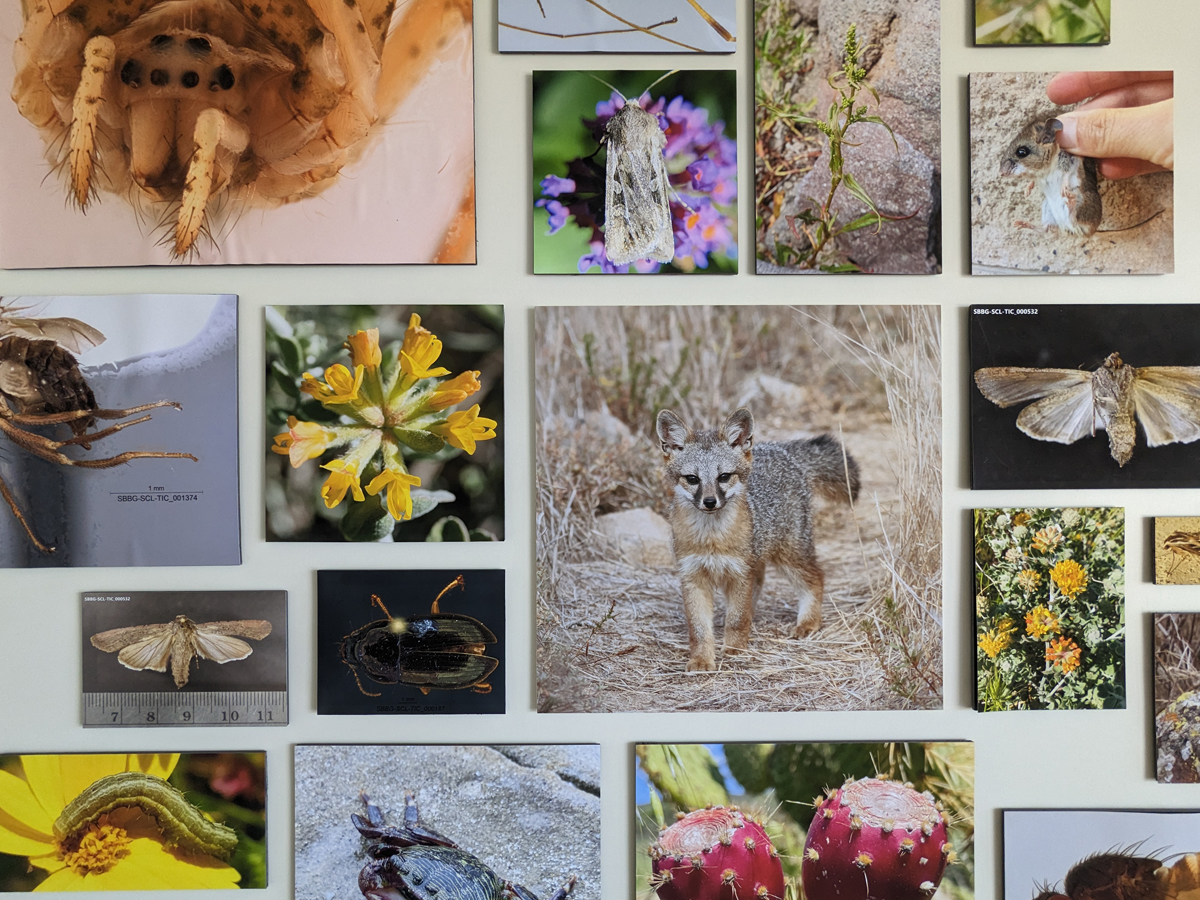
- This event has passed.
SB Botanic Garden “At the Edge” Exhibit: Stories from the Frontlines the Garden’s Conservation Projects on the Channel Islands
June 1, 2023 @ 10:00 am - July 30, 2023 @ 5:00 am PDT

“At the Edge,” a new exhibit now on view at the Santa Barbara Botanic Garden’s Pritzlaff Conservation Center Gallery, goes to the frontlines of the Garden’s conservation work on the Channel Islands to present graphic and photographic stories from two of their ongoing research projects. One section profiles the 30-year-long effort to rescue island mallow, a shrub native only to the Channel Islands, from certain extinction. The other illustrates a study that uses DNA meta-barcoding of the diets of island foxes.
“At the Edge” is on view in the Garden’s Pritzlaff Conservation Center Gallery daily from 10 a.m. to 5 p.m. through July 30. Admission is free with Garden admission, but reservations for admission are required and can be made by visiting www.sbbotanicgarden.org/visit/hours-reservations.
“This exhibit is a wonderful look at a side of the Garden many don’t yet realize exists,” says Kevin Spracher, the Garden’s Interpretation and Exhibitions Curator. “It showcases two incredible conservation projects on the Channel Islands led by our team, which is just a fraction of the work we’re doing to conserve native plants and habitats here in Santa Barbara and across California. We hope they inspire everyone who visits.”
Back from the Brink: Island Mallow Restoration
A wall-sized map shows the Channel Islands to scale and their arrangement in the Channel. Photographs from each island are juxtaposed, showing how they change from northmost Tuqan (San Miguel Island) to Kiinkepar (San Clemente Island) in the south. Note: on a clear day, three of the islands – Santa Cruz, Santa Rosa, and San Miguel – are visible from outside the Gallery.
The island mallow (Malva assurgentiflora) would have gone extinct if not for the collection and restoration efforts of Santa Barbara Botanic Garden, National Park Service, and others. The effort spanned more than 30 years, starting in 1992 when Steve Junak, the Garden’s Clifton Smith Herbarium curator, collected seeds from the dwindling population on ’Anyapax (Anacapa Island).
Island mallow then vanished from the island, a victim of human activities such as ranching and overgrazing by sheep and cattle. Dots on the wall map mark the areas of current Garden restoration efforts, including the recovery of island mallow on ’Anyapax (Anacapa Island). Future island mallow plantings are planned on additional islands.
Fox Feast: DNA Analysis of Island Fox Scat
Scientists study animal diets by analyzing undigested remains in scats (known to non-scientists as “poking through poop”). Called morphological analysis, this method is time-consuming and imprecise. Though some parts of what an animal eats remain intact as they pass through the digestive tract, many foods are softer and leave no trace after digestion.
Recent advances in DNA analysis now allows researchers to get a better idea of what animals eat. This has proved useful for Garden researchers studying the islands’ top predator, the island fox, that are omnivores, meaning they eat both plant and animal matter.
In spring 2019, the Garden’s Invertebrate Field Team gathered 63 scats across five sites on Kiinkepar (San Clemente Island) for DNA meta-barcoding analysis. The exhibit features a visual representation of the meta-barcoding process and a collage of high quality, close-up images of what was found in the scat, including a surprising number of native plants.


